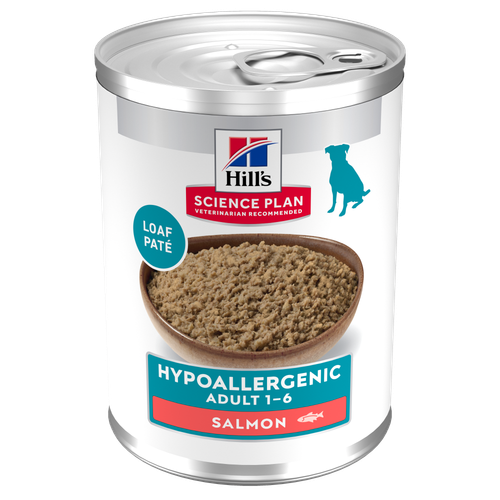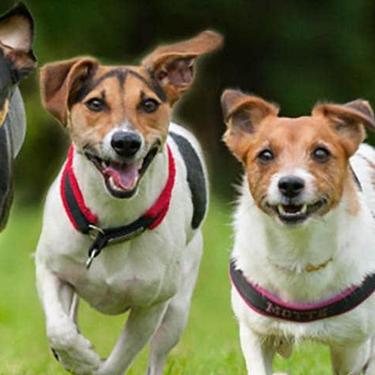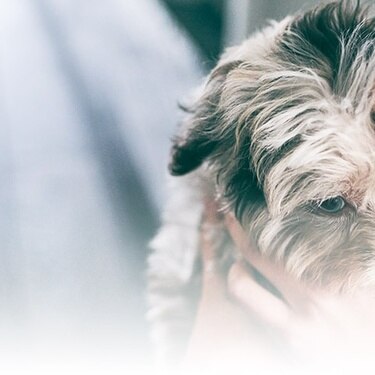
-
Find the right food for your petTake this quiz to see which food may be the best for your furry friend.Find the right food for your petTake this quiz to see which food may be the best for your furry friend.Featured products
 Puppy Food
Puppy FoodHill's Science Plan Puppy Multipack Wet Dog Food with Chicken & Beef are complete premium pet foods for growing puppies from weaning until 1 year old and for pregnant and nursing dogs. Your puppy will love these deliciously smooth and savoury minced loaves, formulated for balanced nutrition and overall health.
Shop Now Mature Adult Dog Food
Mature Adult Dog FoodHill's Science Plan Mature Adult Multipack Wet Dog Food with Chicken & Beef are complete premium pet foods for mature adult dogs from 7 years. Your dog will love these deliciously smooth and savoury minced loaves, formulated to deliver the appropriate amount of energy to support the needs of adult dogs.
Shop Now Adult Wet Dog Food with Beef
Adult Wet Dog Food with BeefHill's Science Plan Adult Multipack Wet Dog Food with Chicken, Beef & Turkey are complete premium pet foods for adult dogs from 1 year. Your dog will love these deliciously smooth and savoury minced loaves, formulated for balanced nutrition and overall health.
Shop NowFeatured products Adult Multipack Wet Cat Food with Beef, Ocean Fish & Chicken
Adult Multipack Wet Cat Food with Beef, Ocean Fish & ChickenTender chunks in gravy for cats, with high-quality protein to maintain lean muscle. With vitamin E and omega-3s & -6s for healthy skin and balanced minerals to support healthy vital organs.
Shop Now Light Adult Multipack Wet Cat Food with Chicken & Ocean Fish
Light Adult Multipack Wet Cat Food with Chicken & Ocean FishTender chicken chunks in gravy for cats, with L-carnitine and fewer calories for ideal weight management. Packed with high-quality protein, omega-6s, and vitamin E for shiny fur and healthy skin.
Shop Now Mature Adult Wet Cat Food with Chicken
Mature Adult Wet Cat Food with Chicken
Tender chicken chunks in gravy for mature adult cats. Made with easy-to-digest ingredients, high-quality protein for lean muscle maintenance and antioxidant vitamins C+E for optimal health.
Shop Now -
Dog
- Dog Tips & Articles
-
Health Category
- Weight
- Food & Environmental Sensitivities
- Urinary
- Digestive
- Joint
- Kidney
-
Life Stage
- Puppy Nutrition
- Adult Nutrition
- Senior Nutrition
Cat- Cat Tips & Articles
-
Health Category
- Weight
- Skin & Food Sensitivities
- Urinary
- Digestive
- Kidney
-
Life Stage
- Kitten Nutrition
- Adult Nutrition
Featured articles The Right Diet For Your Pet
The Right Diet For Your PetIn people, the right diet is very important. If you are eating the wrong way for your metabolism, activity level, age and lifestyle you could end up with health issues.
Read More Show some love with wet foods: a great choice for pets with health issues
Show some love with wet foods: a great choice for pets with health issuesShow some love with wet foods: a great choice for pets with health issues.
Read More The Incredible Science Behind Your Pet's Microbiome
The Incredible Science Behind Your Pet's MicrobiomeLearn what your pet's microbiome is, how it contributes to your pet's gut and overall health, and why nutrition is important in maintaining healthy microbiomes.
Read More -


If you have a dog or are seriously thinking of bringing a new dog into your home, you’ve likely heard a lot of expert dog training advice, either from books, magazines or television programmes. Expert dog trainers agree that dog treats are an effective and appropriate training tool and a great way to say “well done” in terms that your dog clearly understands.
But did you know that treats are also important to bonding with your canine friend? Dogs are a social species, just like humans. Both four-legged and two-legged friends can benefit from the social aspect of treats – a display of love and affection from one individual to another through sharing.
When and where to give treats
Be sure to think outside of your usual routines when giving treats to your dog. Bonding can happen at any time, and your dog should learn that any moment spent with you is a positive one. Surprise them with a delicious treat while you’re both curled up on the sofa or when you come home from work. Make these kinds of treats a randomly timed surprise, and be sure not to encourage treat-seeking behaviours or give potentially harmful human foods.
During training sessions, give treats promptly when your dog has done something well, whether you are at home, in the dog park or in the town. In this case, you will be rewarding proper dog behaviour within any given environment, which should be the goal. Aromatic treats are best for training. The appealing scent will be positively associated with the new skills helping to build on the training results.
If you want to condition your dog to like a new location, such as the vet’s surgery or your new home, giving treats and lots of praise and attention in those places can help them feel at ease.
Carefully consider the circumstances before you give a treat, and stay on guard for potential training traps. Giving treats to your dog while you are sitting at the dinner table may simply teach them to pester you every time you sit down for a meal. This will require paying close attention at first, but it will soon become second nature.


Tasty Tips
Give treats only when your dog is calm and acting in a way you want. If jumping up or barking to demand a treat, you can end up rewarding naughty behaviour by giving in.
Not all treats are created equal
Giving human foods or low-quality pet treats can give your pet a tummy full of unhealthy fats, sugars, flavourings, or excess salt, all of which can easily cause digestive upset or worse. Some human foods are even poisonous or toxic for dogs, especially chocolate or anything containing onions, raisins or caffeine.
Too many treats, or inappropriate treats, can significantly impact a dog’s weight and overall health. Canine obesity is a serious health issue that’s best prevented. Obesity can even shorten your dog’s lifespan and lower quality of life. Be sure your dog is getting healthy treats that won’t cause weight gain or compromise the weight loss goals you’ve already set.
Here’s a little comparison chart to show in human terms just how unhealthy some commonly fed dog “treats” can be:
| 15kg dog (854 kcal/day) | Average adult (165cm tall, 2000kcal/day) | |
|---|---|---|
| 28g cheese | = | 1 hamburger |
| 1 cookie | = | 2 scoops of ice cream |
| 2 slices of salami | = | 4 cookies |
| 1 dental stick | = | 1 chocolate bar |
The best treats for your dog are those that are not only tasty but also support their overall health. Some treats offer health benefits beyond being simply a tasty snack, so check labels carefully and also choose treats that have no added artificial preservatives, flavours or colours. Treats should not exceed 10% of your dogs daily calorie intake.
Choose your treats – as well as the time and location of giving them – wisely, and you’ll help reinforce a deeper bond along with better behaviour and better lifelong health in your beloved dog. A treat indeed.


One of our staff authors prepared this article for you
Related products

Hill's Science Plan Mature Adult Multipack Wet Dog Food with Chicken & Beef are complete premium pet foods for mature adult dogs from 7 years. Your dog will love these deliciously smooth and savoury minced loaves, formulated to deliver the appropriate amount of energy to support the needs of adult dogs.

Hill's Science Plan Adult Multipack Wet Dog Food with Chicken, Beef & Turkey are complete premium pet foods for adult dogs from 1 year. Your dog will love these deliciously smooth and savoury minced loaves, formulated for balanced nutrition and overall health.

Hill's Science Plan Hypoallergenic Adult Wet Dog Food with Salmon is a complete premium pet food for all adult dogs from 1 year. This savoury tinned loaf is specially formulated for dogs with delicate skin and stomachs. It features a single novel animal protein source and is grain-free.

Hill's Science Plan Puppy Multipack Wet Dog Food with Chicken & Beef are complete premium pet foods for growing puppies from weaning until 1 year old and for pregnant and nursing dogs. Your puppy will love these deliciously smooth and savoury minced loaves, formulated for balanced nutrition and overall health.
Related articles

Many human foods are dangerous to dogs. Read about 5 of the worst toxic food offenders that can kill your dog - and how much it takes to hurt them.

Learn effective tips for feeding a dog that's a picky eater and ensure proper nutrition for a finicky eater. Discover tips for pet parents at Hill's Pet UK.

Learn about the potential health risks of a raw diet for dogs and why they aren't the best option for your pup or you.

How, when and what to feed your new puppy is an important decision, learn more about the things to consider for feeding your puppy.

Put your dog on a diet without them knowing
Our low calorie formula helps you control your dog's weight. It's packed with high-quality protein for building lean muscles, and made with purposeful ingredients for a flavourful, nutritious meal. Clinically proven antioxidants, Vitamin C+E, help promote a healthy immune system.
Put your dog on a diet without them knowing
Our low calorie formula helps you control your dog's weight. It's packed with high-quality protein for building lean muscles, and made with purposeful ingredients for a flavourful, nutritious meal. Clinically proven antioxidants, Vitamin C+E, help promote a healthy immune system.

